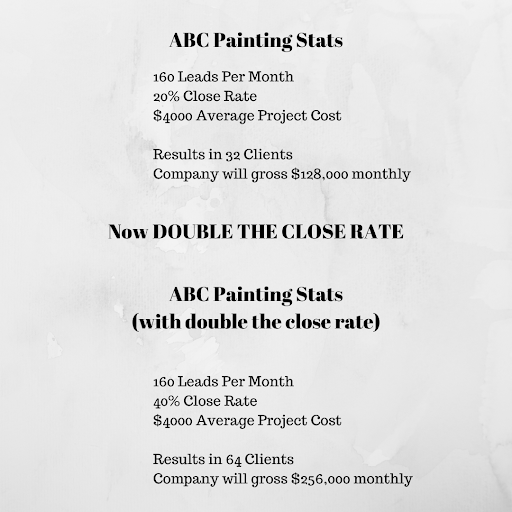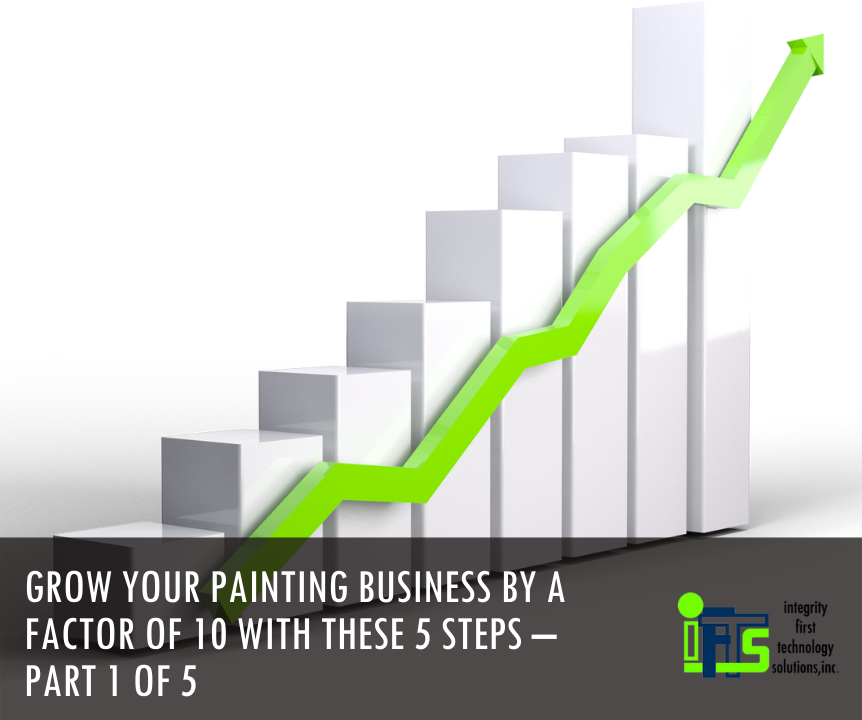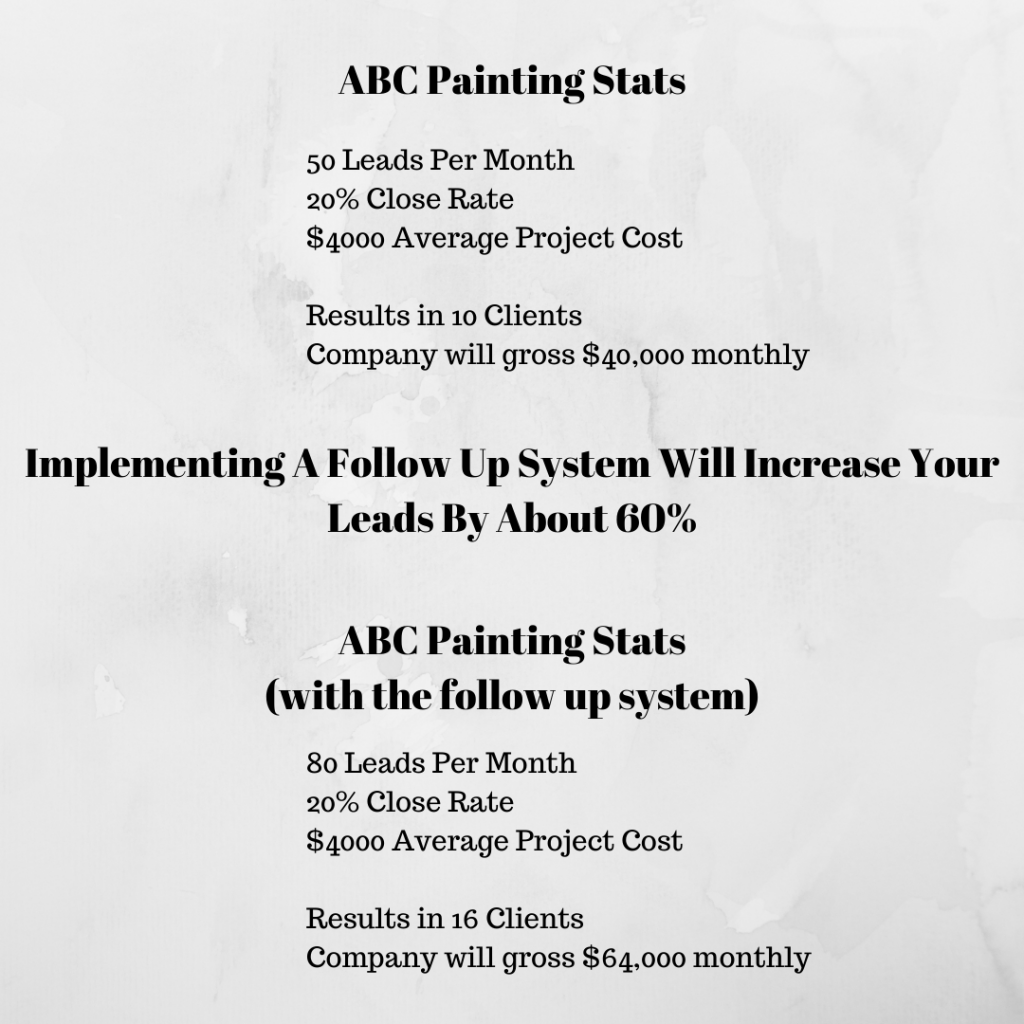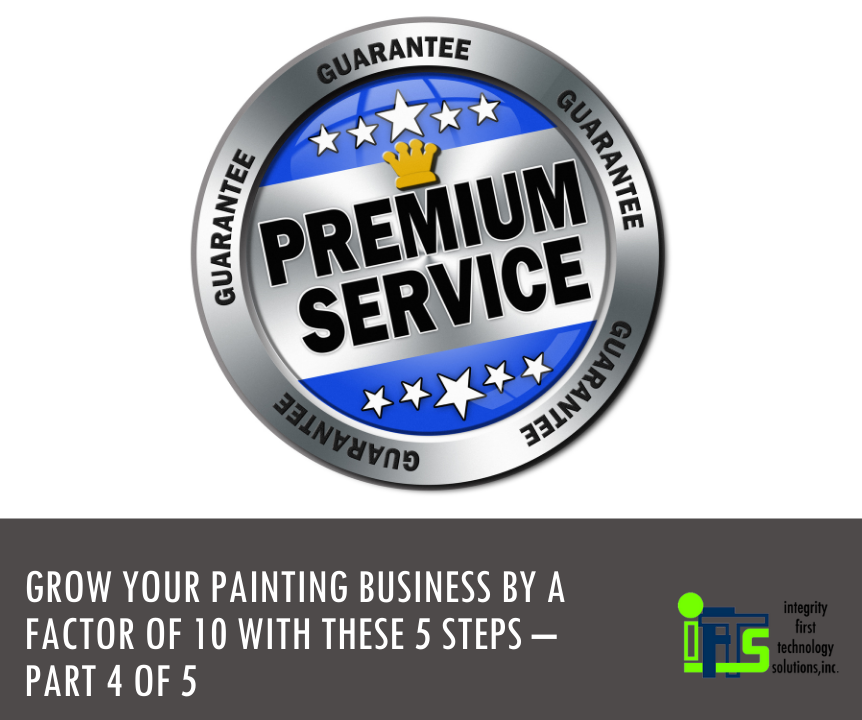
Have you ever heard of the 80/20 rule or the Pareto principle?
It states that “80 Percent of Your Results Come from 20 Percent of Your Efforts, and 20 Percent of Your Results Come from The Other 80 Percent.”
The rule applies to your customers as well. 80% of your revenue typically comes from 20% of your clients. Now, let’s apply the 80/20 rule again to the top 20% of your clients. 64% of your revenue comes from 4% of your clients.
What does this tell us?
There is always a small percentage of people at the top that are willing to pay a premium price.
However, are you offering that chance to them?
There are ALWAYS at least 5-10% of your clients that would be willing to pay a premium price to get a premium service.
A premium service is going to be better, faster or easier than the services that you currently offer…and it’s going to cost 2-3 times as much.
To create your premium service offer, you need to ask yourself 3 questions:
- What can you do to offer a better painting service than other companies?
- What can you do to be faster than other companies?
- How can you make your process easier than other companies?
Let’s look at a few examples for each question…
What can you do to offer a better painting service than other companies?
To offer a better painting service, you need to increase the quality of the experience. You could use a more expensive paint that lasts longer and doesn’t require as many coats. You could give a guarantee to the homeowner that you run criminal background checks on all of your employees. Because a lot of people are now working from home full time, you could offer a whisper guarantee – they won’t even know that you’re there while you’re working.
To create a better experience for the customer, you will need to go the extra mile.
What can you do to be faster than other painting companies?
To offer a faster service, take the time that it normally takes you to complete a job and decrease it by 30% or more if possible. Offer kitchen cabinets done in a week (obviously kitchen size matters, so there can be a disclaimer). Offer rooms done in a day with quality work.
When you provide a quicker service, it really makes you stand out from the crowd.
How can you make the painting process easier than other companies?
There are a ton of premium options here that you can offer, starting with the sales process. As soon as someone contacts you, you could FaceTime them and do the estimate immediately. This also puts you ahead of your competition as the first quote.
You could offer a free stay at a hotel or a small vacation (built into the price of course) while you work on their house. They don’t have to deal with the mess/upheaval…and you don’t have to deal with them as a little bonus. There are many companies that do this. You can get great deals on pricing from travel businesses.
If they are pet people, you could hire pet sitters to take the animals away for the days that you work. This way, there are no accidents and the pets don’t have to deal with an unfamiliar situation in their home.
Think of the problems that are created by you painting their house and provide solutions to create your premium offering.
How To Present The Premium Painting Offerings
Make the premium offerings part of your proposal. People like to have choices, but not too many. According to a study done in 2000, people are more likely to make a purchase when presented with less choices. So, offer 2-3 options max when it comes to the premium offerings.
This also allows the people choosing your regular pricing to feel like they received a “deal”.
Let’s Return To Our Example Company With A Premium Offering For Our Painting Business
Remember, ABC Painting started with $40,000 monthly gross revenue. Then, we implemented a follow-up system, which will increase the leads by about 60%. This took the gross monthly revenue to $64,000 with a close rate of 20%.
Next, we doubled our leads from 80 to 160 per month using the tactics in Step 2 of this series. This resulted in 32 new clients and a monthly gross income of $128,000.
Then, we doubled the close rate from 20% to 40%, which gave us 64 clients per month with a monthly gross income of $256,000.
Now, if we add a premium offering at $12,000 that 10% of our clients choose – we’ll have 160 leads per month with a 40% close rate. That gives us 64 clients. 90% of them, 58 clients, choose the regular offering at $4000 and 10% of them, 6 clients, choose the premium offering at $12,000. This gives us a total revenue for the month of $304,000.
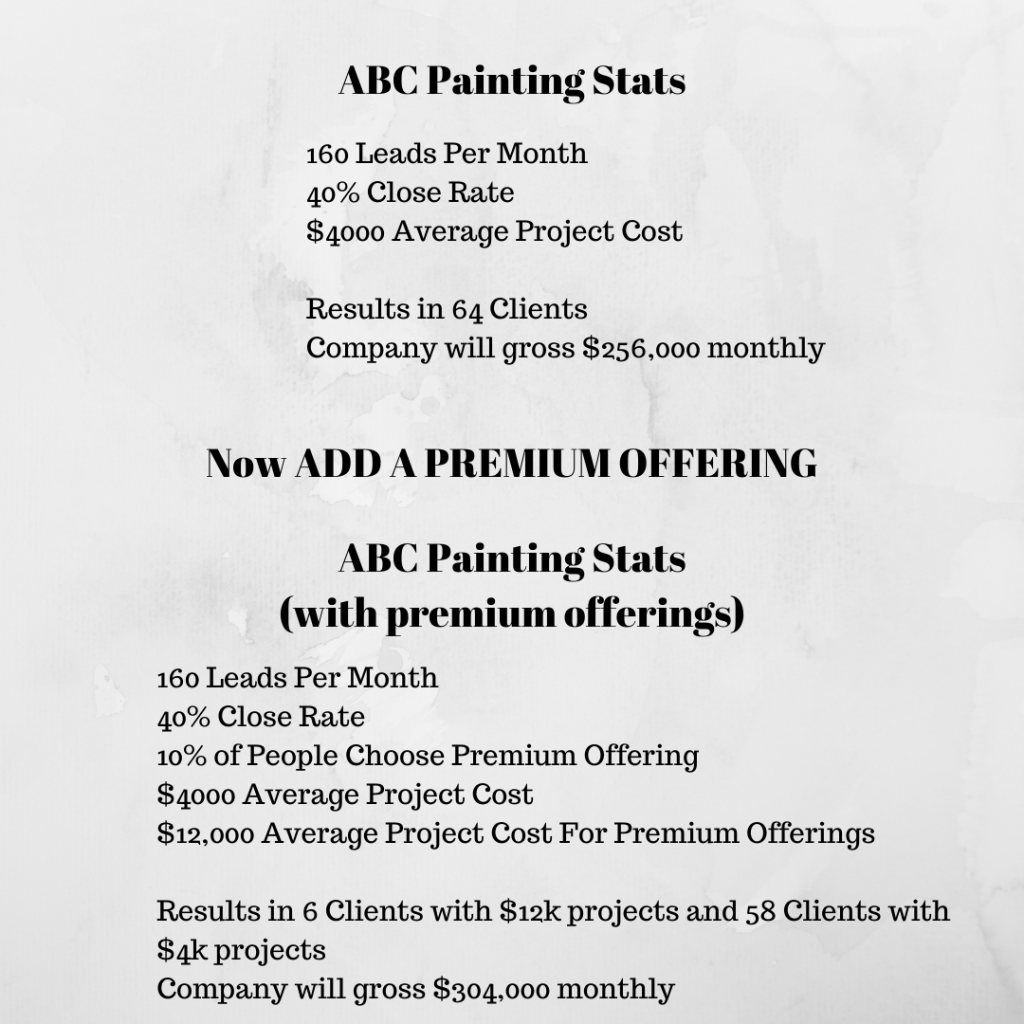
This is an increase of 6.6X
Stay tuned for the finale next week (Step 5) where we will talk about being the irresistible option, which allows you to charge what you want!

